Siamese Fighting Fish
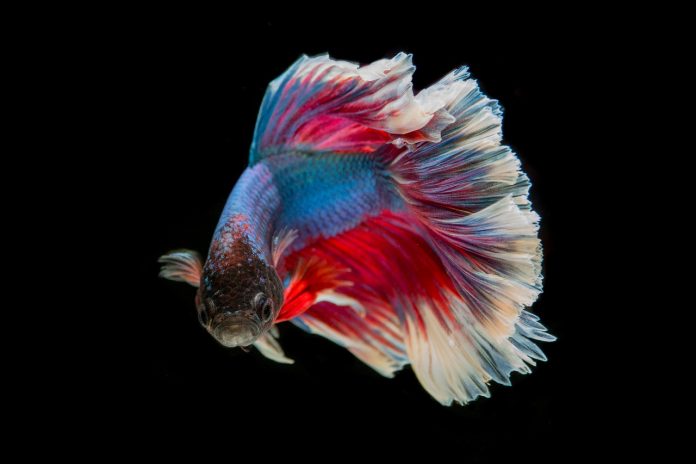
[photo cr. Kapook]
The betta fish (or Siamese fighting fish) has long been considered one of the most popular breeds of Thai ornamental fishes. Bettas are typically found in the wild. Their natural habitats include bodies of water such as streams and wet rice paddies. Through years of selective breeding, Thai people have developed wild bettas into majestic, living pieces or art, renowned for their beauty and vitality.
The global popularity of the Siamese fighting fish, known in Thai as pla kat (Thai: ปลากัด), has brought the Thai people immense pride. This recognition coupled with the importance of bettas in Thai social life, have led this fish species to be regarded as a national icon.
Description
The scientific name for pla kat is Betta splendens. They are commonly known as Siamese fighting fish and are native to all regions of Thailand as well as other parts of Southeast Asia. Wild betta fishes have short fins and tails and are generally brown or grey with green tints, some with patterns on their trunks. The males’ fins and tails are longer than the females and their color is much more vibrant. The betta is aggressive by nature. They inhabit bodies of water that are fairly clear, stagnant, or slow flowing, such as lakes, ponds, swamps, and canals.
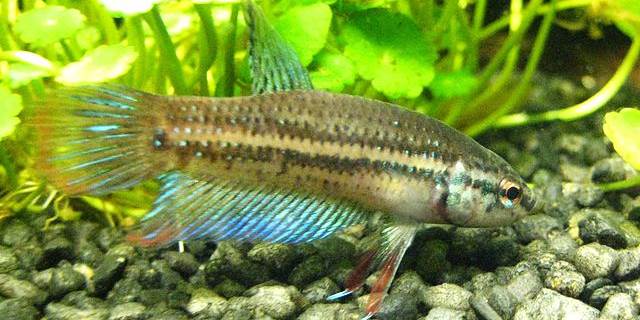
Wild Betta splendens [photo cr.www.nextsteptv.com]
Bettas are divided into the following notable types:
- Pla kat luk moh (Thai: ปลากัดลูกหม้อ) has a thick trunk, large head, big mouth, and dark fins. They were originally green or dark blue with red hues, however, nowadays they also come in red, dark blue, purple, green, and copper. They are tenacious and fervent biters making them highly favored for sparring.
- Pla kat luk toong (Thai: ปลากัดลูกทุ่ง) is smaller than the luk moh but is longer in length. They have long red fins with tints of green, are easily startled, incredibly swift, have very sharp teeth, but poor stamina.
- The hybrid betta or Pla kat luk pasom (Thai: ปลากัดลูกผสม), also known as the pan sung ka see (Thai: พันธุ์สังกะสี) and pan luk takuah (Thai: พันธุ์ลูกตะกั่ว) are spawned by cross-breeding pla kat luk moh and pla kat luk toong. They are swift like the pla kat luk toong and has the stamina of the pla kat luk moh. This hybrid has better endurance when sparring with a pure-bred pla kat luk toong.
- Pla kat jeen is spawned by selective breeding with parents that have outstanding aesthetic qualities to achieve offspring with long fins and vivid colors. Just like the pla kat luk moh, they are not easily startled but are not very tough. The name jeen derived from their beautiful shades and magnificent movements akin to Chinese opera performers.
The Warrior Fish ….
The unique characteristics of the betta fish is their warrior instincts, high endurance, and readiness to attack at anytime. This is the main reason they are used in competitions, a sport Thais enjoyed since ancient times. Villagers in the countryside would gather at the end of their working day in the fields with their betta fish for matches. Their popularity in Siam led to the breeding and hybridization of bettas in order to produce offspring with higher endurance and aggression that are suited for competitions.
With such recognition, the sports’ many terminologies became idiomatic words that are used to describe everyday human behaviors. For instance, “luk moh” is used to describe the descendant of a notable figure or a person that has been long in service and has all knowledge of the ins and outs that they are given a prominent position within a department, while “luk lai” (Thai: ลูกไล่), a term used to describe weak bettas that would be chased and attacked by its opponent, now refers to a person that is bullied just for the sheer pleasure of the tormentor.
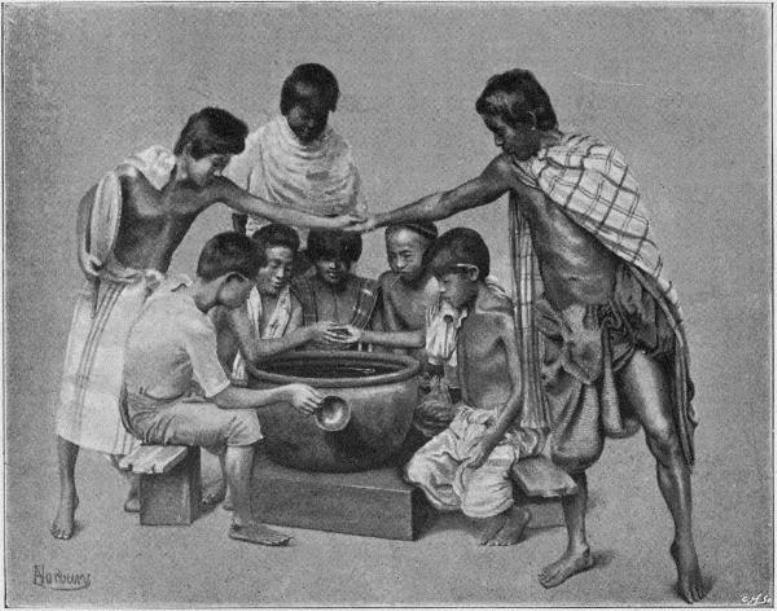
Fish-fighting in the past [photo cr. ICONSIAM]
The Show Fish ….
Examples of color variations in bettas include: solid color; bi-color; butterfly color; Cambodian butterfly color; and marble color.
Furthermore, the shapes of the Thai pla kat are categorized as follows:
- The snake-head fish shape (pla chon) has a long trunk and head like a snake-head. The head is bigger than the body when viewed from above.
- The perch shape (pla moh) has a considerably short trunk but is somewhat plump and wide.
- The clown knifefish shape (pla krai) has a straight body that is square. It is slender in build with long pectoral and anal fins when viewed from above.
- The silver barb shape (pla tapien) is that of a hybridized fish with a plump body and long fins.
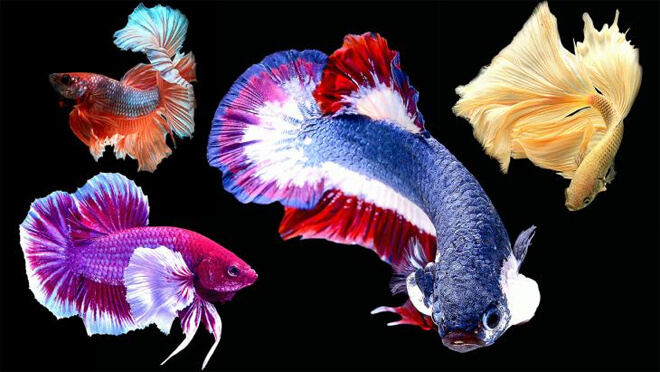
[photo cr. https://joo.gl/h2YCm]
Thai Fish …. Thai Wisdom
The Thai wisdom in betta breeding and keeping is an intricate knowledge that has been passed down through generations. This led to a more in-depth study to enhance their uniqueness with the warriorlike quality and beauty. The process echoes the close relationship between the Thai way of life to nature.
In breeding Siamese fighting fishes, the male specimen must be agile, healthy, and a keen nest builder. The female must also be healthy and agile. Her belly must be swollen with an egg spot in the lower belly. In choosing a breeding pair, both specimens should have deep and vibrant colors with thick streaming fins. The offspring will have their parents’ dominant traits.
Breeders must first place each fish in separate, transparent jars that are placed next to one another so the pair can see each other at all times. This process is known as tiab khoo (Thai: เทียบคู่) and the it takes around seven days depending on the swelling of the female’s belly. Next, the breeder places the male and female in the same jar containing foliage or aquarium decorations to imitate a natural breeding space for bettas. The male fish will begin building a bubble nest among the foliage, and once completed, the male will herd the female to the nest. When the female is positioned under the bubble nest, the male will wrap himself around her to release her eggs and inject the eggs with semen.
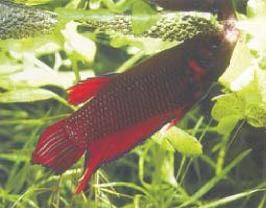
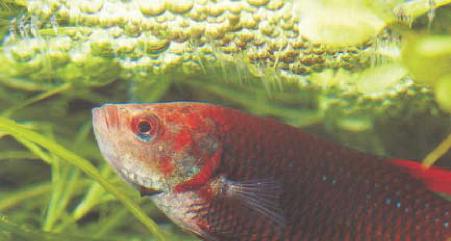
Male building nests [photo cr. TruePlookpanya]
As the eggs gradually sink to the bottom of the jar, the male will catch them in his mouth. With each mouthful, he swims up to store them in the bubble nest. The male will continue going back and forth to repeat this process this until all the eggs are in the nest. Once the female has spawned all of her eggs, which could take many hours with hundreds of eggs, the male will chase the female out of the nest and he then assumes the role of the caretaker. The betta keeper must now scoop the female out of the jar otherwise she will consume the fertilized eggs.
The keeper now allows the male fish to tend to the eggs over the next two days before removing him. The eggs will hatch after about two days. The hatched fry feed on their egg sacs which will be ingested within three to four days before they require feeding. The betta keeper should feed them very tiny sized foods, such as boiled eggs dissolved in water and moina, twice a day for approximately one week until they are big enough to consume mosquito larvae. After a month, the gender of the fry can be distinguished and this is when they should be segregated and reared individually to prevent them from attacking each another. A month-old fry are about one centimeter in size. They are ready for sale at two months of age.
The practice of betta breeding for sparring matches was originally intended as a means to develop short-finned bettas, or pla kat kreep sun (Thai: ปลากัดครีบสั้น), or pla luk moh. This is done to achieve new varieties that are better biters, tougher, and larger in size. Among the many fish keeping techniques are the use of herbs and sedge leaves to help coat and strengthen the scales. As for the breeding of ornamental bettas, the development of color vibrancy and new looks are what the breeders are after. This led to the creation of the pla kat jeen variety. Improving the shapes of this variety have been in the focus in the last few years. Even the short-finned bettas are now bred as ornamental fish.
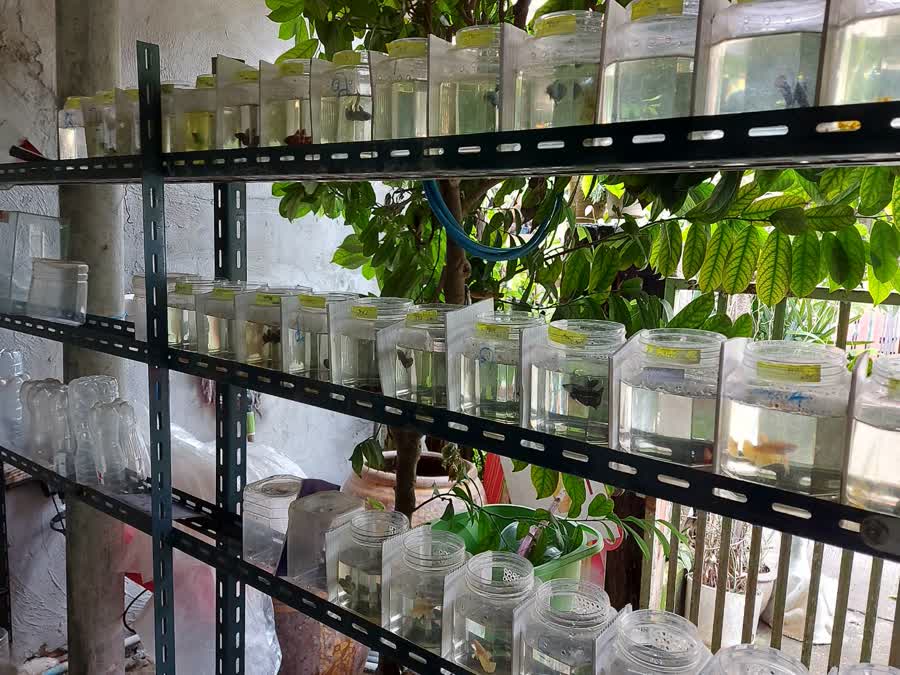
Fishes are kept in seperate jars to prevent confrontations [photo cr. National News Bureau of Thailand]
These days, pla kat luk moh now come in a myriad of shades and colors and have become highly sought after among fish enthusiasts. Betta breeding has evolved into a high demand business for both domestic and global trade as more and more customers prefer to keep them as pets as opposed to sparring in the past.
Thai Fish … Thai Icon
The Siamese fighting fish Thai is unique in its protectiveness of its territory, very much like the Thai people, who are ferocious in the battlefield, yet gentle in times of peace. Just like a passage in the national anthem that states “the Thais are peaceful-loving, but are not cowards in times of war” (Thai:ไทยนี้รักสงบ แต่ถึงรบไม่ขลาด),
In 2019, the cabinet approved a resolution to make pla kat the national aquatic animal as proposed by the Department of Fisheries, the Ministry of Agriculture and Cooperatives. There are currently a large number of betta farmers who have registered their farms with the department including home breeders as the fish Thai generate a stable income for the community. Today, the Siamese fighting fish continues to be used as a symbol to represent Thailand in many occasions.
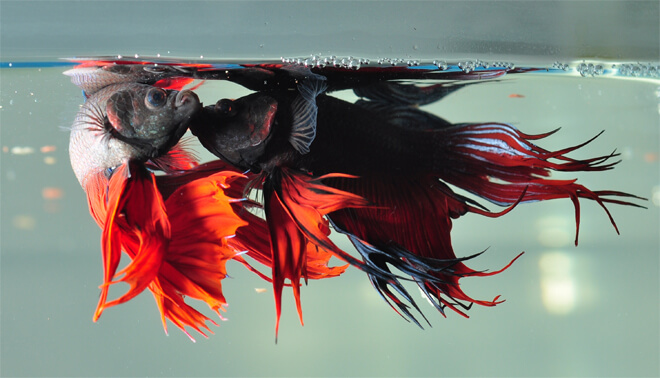
[photo cr. Thai SMEs Center]
References
- Jenjob Yingsumon “Siamese Fighting Fish, the Regal Warrior” Watthanatham Journal: Department of Cultural Promotion, yr. j3, no. 3, July – September. bno4, pp. j4 – j9. Retrieved April 1 2020, Link
- Mahidol University: https://il.mahidol.ac.th/e-media/siam-fighting-fish/history.html
- Thairath: https://www.thairath.co.th/news/politic/1488612


